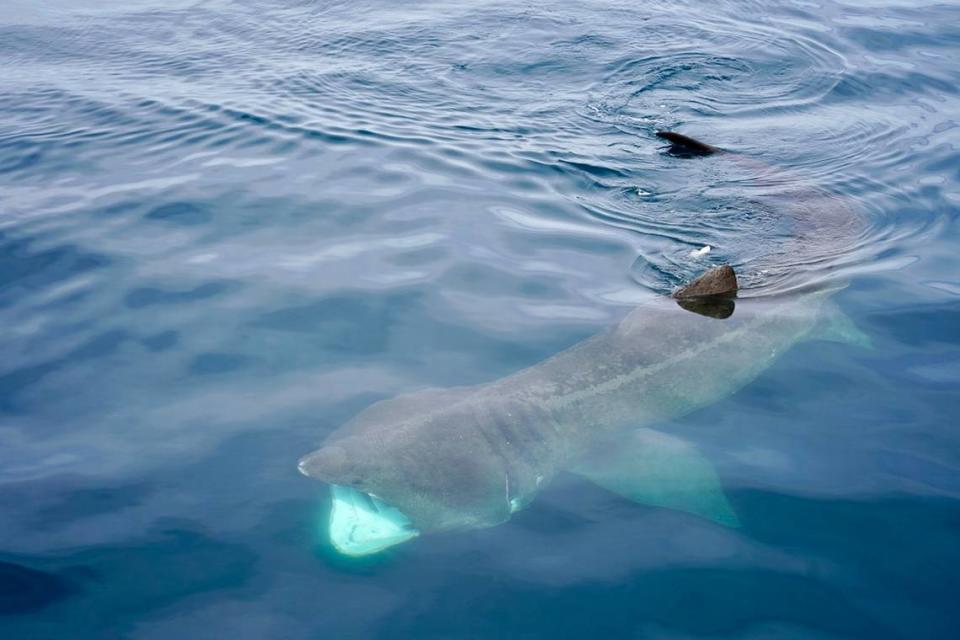‘Gentle giants’ with glowing mouths spotted off California coast. ‘Uncommon sight’
Catching a glimpse of a basking shark off the Southern California coast is rare.
So rare that Andrea Mills has only encountered them four times in her nearly three decades working as an educator and naturalist with Island Packers Cruises, a concessionaire boat company that escorts visitors from the Ventura Harbor to the Channel Islands.
But on Saturday, Feb. 17, as the company took a group of about 130 visitors to Santa Cruz Island, the water in the Santa Barbara Channel was just right, Mills said in a Feb. 21 phone interview with McClatchy News.

“The clarity of the water was really good, so we just stopped,” Mills said. “As the basking sharks approached, you could see their whole body shape underneath the water.”
The sight captivated the passengers aboard, who stayed on the boat’s rails the entire time the creatures fed, Mills said.
“When you see the (boat) crew running around taking pictures, too, that’s when you know, it’s something special,” Mills said. “This was not an everyday occurrence.”
The two sharks had their glowing mouths wide open, filter feeding on the water’s surface, according to Mills.
“They’re just so majestical looking with this big, giant, open glowing mouth,” Mills said. “It’s just that prehistoric shark vibe that you get and that makes it just that much more special.”
Mills said she estimates the sharks were about 20 to 25 feet in length.
“It’s really exciting, because they’re such an uncommon sight,” Mills said.
‘Gentle giants’
The second largest fish in the world, the basking shark can grow up to 32 feet in length and weigh more than 5 tons, the National Oceanic and Atmospheric Administration says.
Though the creatures “can grow to the length of a school bus,” they are considered “gentle giants,” according to a NOAA video.
The filter feeders “don’t have any true teeth,” Mills said. Instead, they have gill rakers.
As the shark opens its wide mouth, Mills said “the water flows through and these gill rakers capture little bits of plankton.”
Rare sighting brings hope
Mills said that while the sharks are a rare encounter now, they were once abundant in the channel.
“I’ve heard a lot of stories back in the early days, the 70s and 80s, that you might see up to 25 or 30 at a time,” Mills said.
Over time, however, those numbers started to dwindle.
The species was once subject to shark finning, which is now an illegal practice, according to Mills.
“They were also targeted specifically for their huge livers here for shark liver oil,” Mills said. “This and more has led to a global decline in the population.”
While they’re not considered an endangered species in the United States, they are listed as endangered on the global level, Mills said.
Nonetheless, this recent sighting offers hope, Mills said.
“It also gives me hope when I see the resilience of the ocean — species that were on the brink now appearing more regularly as they start to recover,” Mills said. “If we just give Mother Nature a little room, she’s pretty good at doing the rest.”
Deep-sea creature — able to glow in the dark — caught by trawlers. It’s a new species
Endangered baby sea creature spotted feeding alongside mom near Maine. See the duo
20-foot-long ‘gentle giant’ stuns kayakers, paddleboarders in Scotland, videos show

